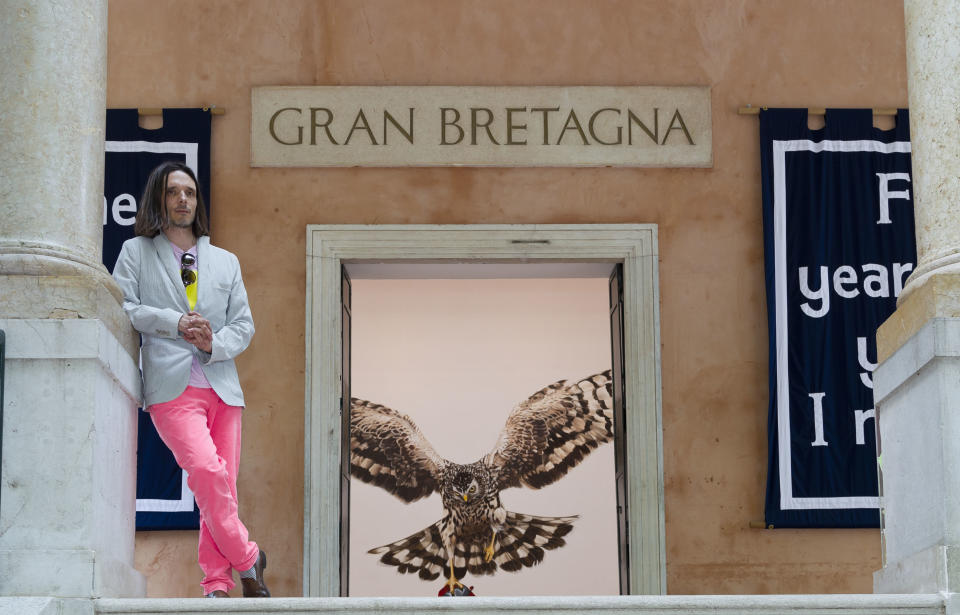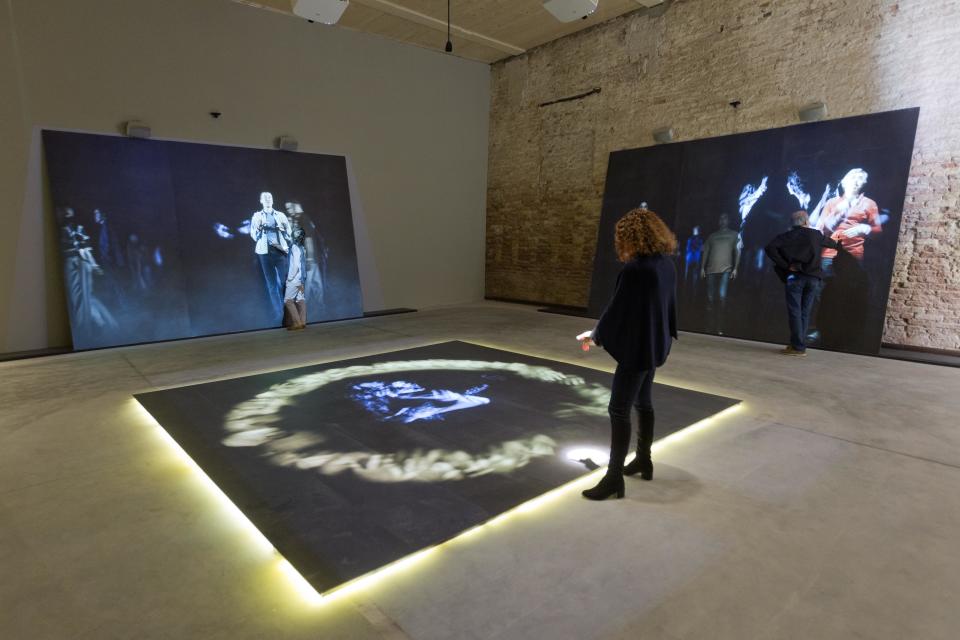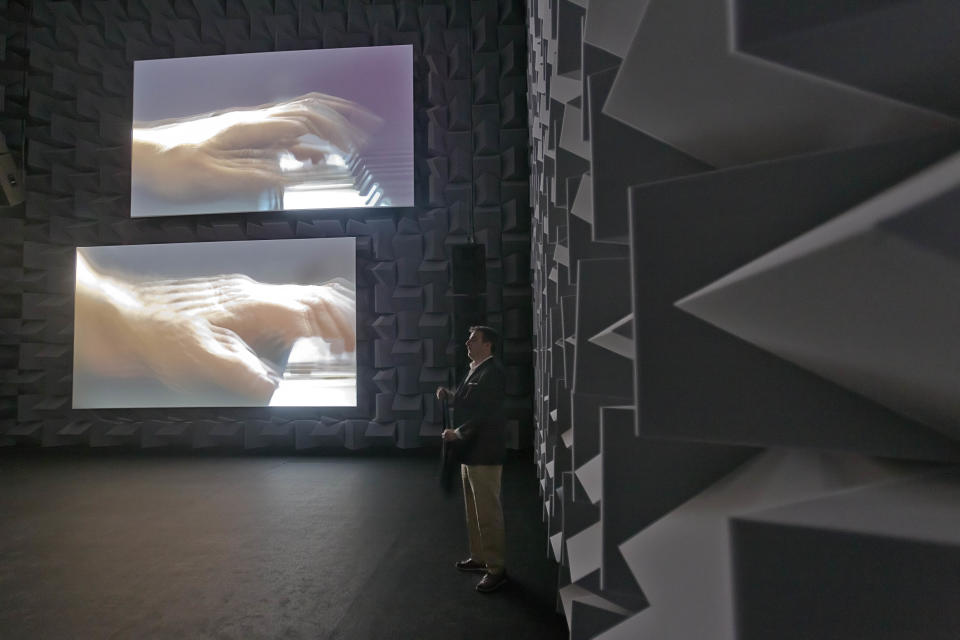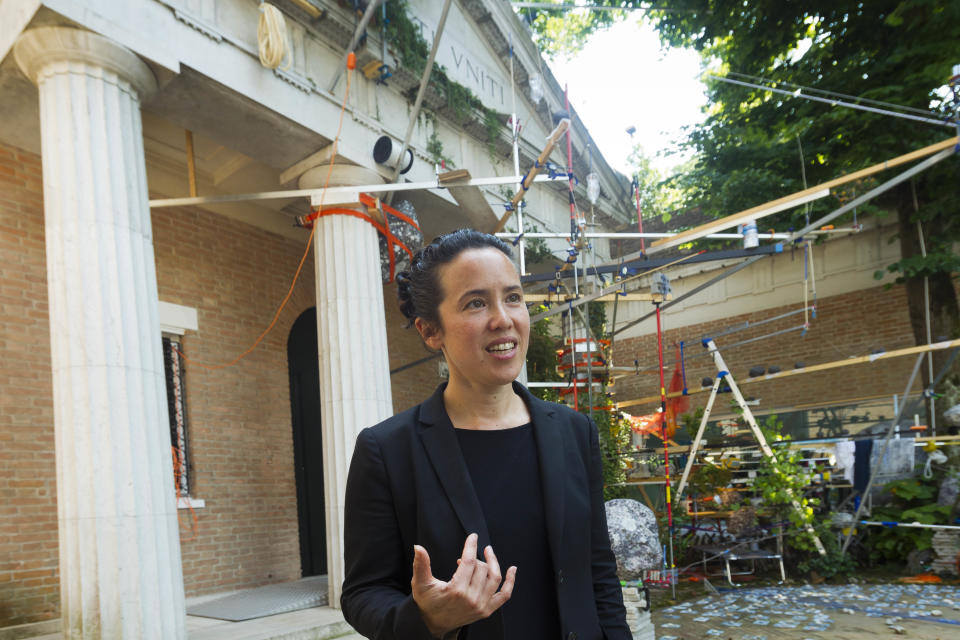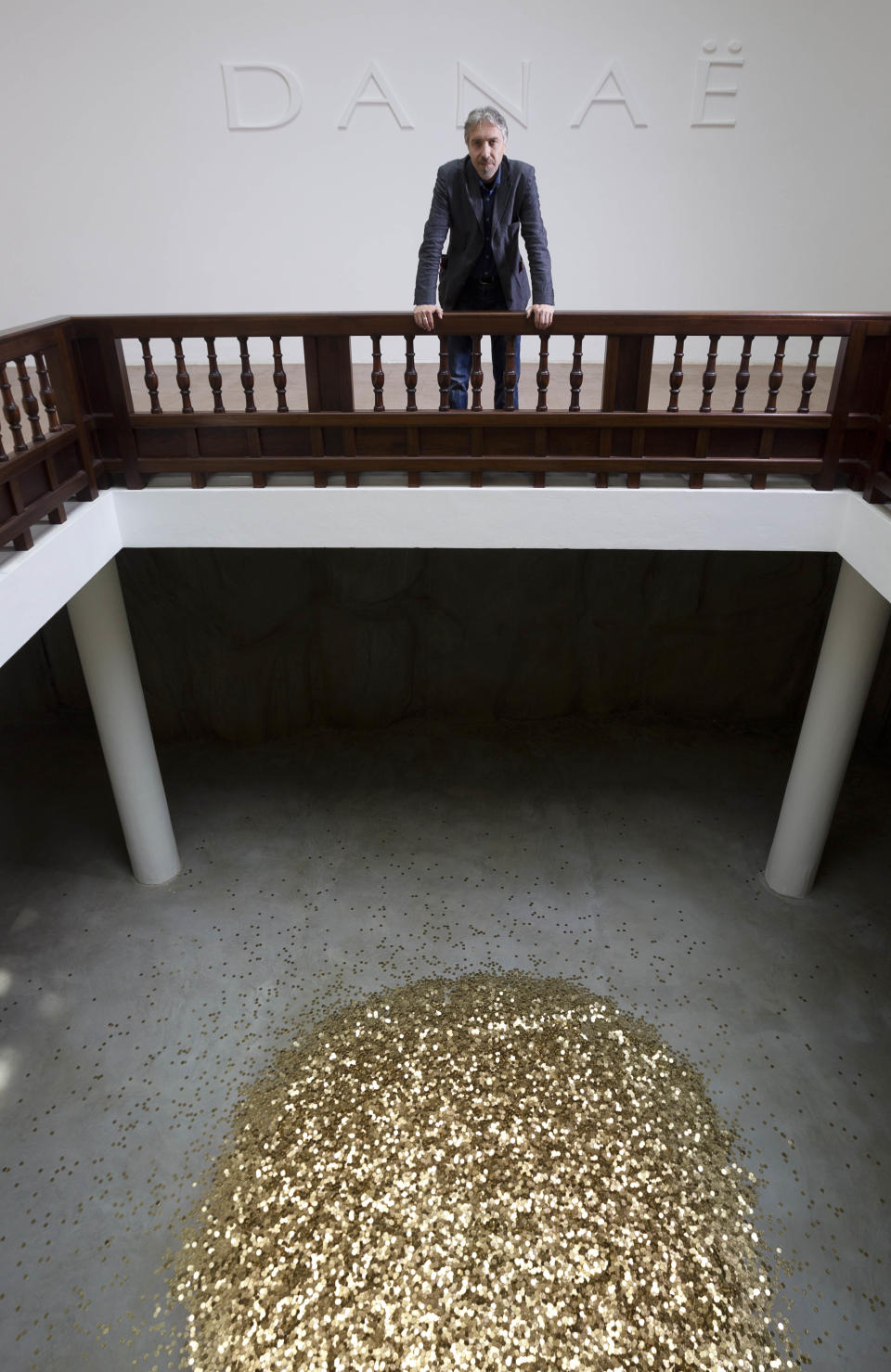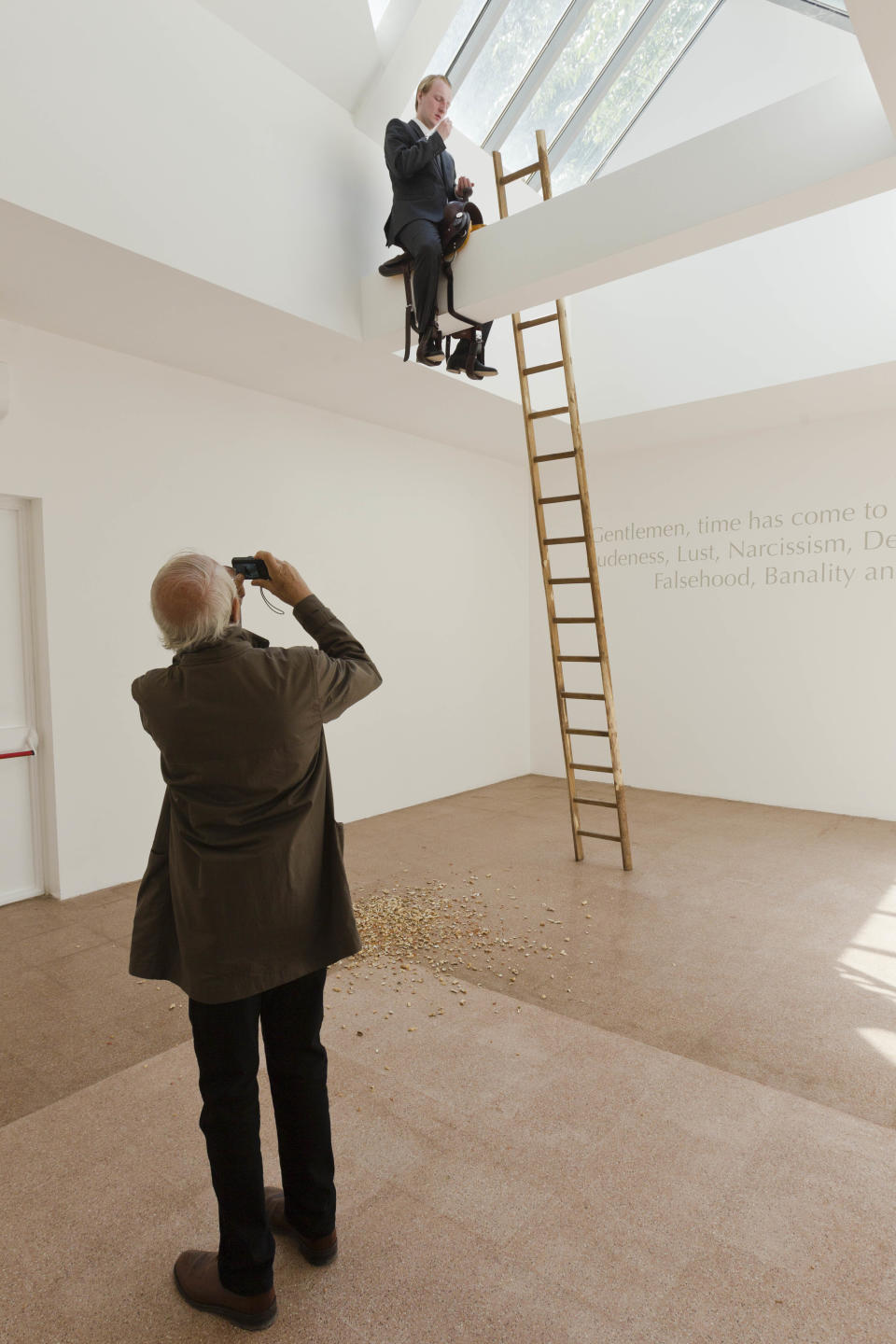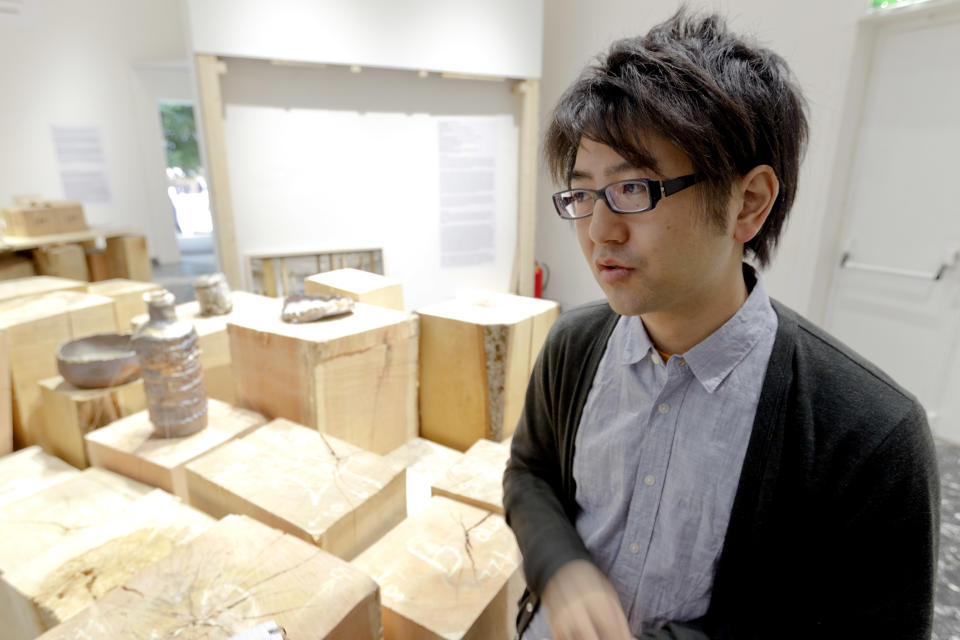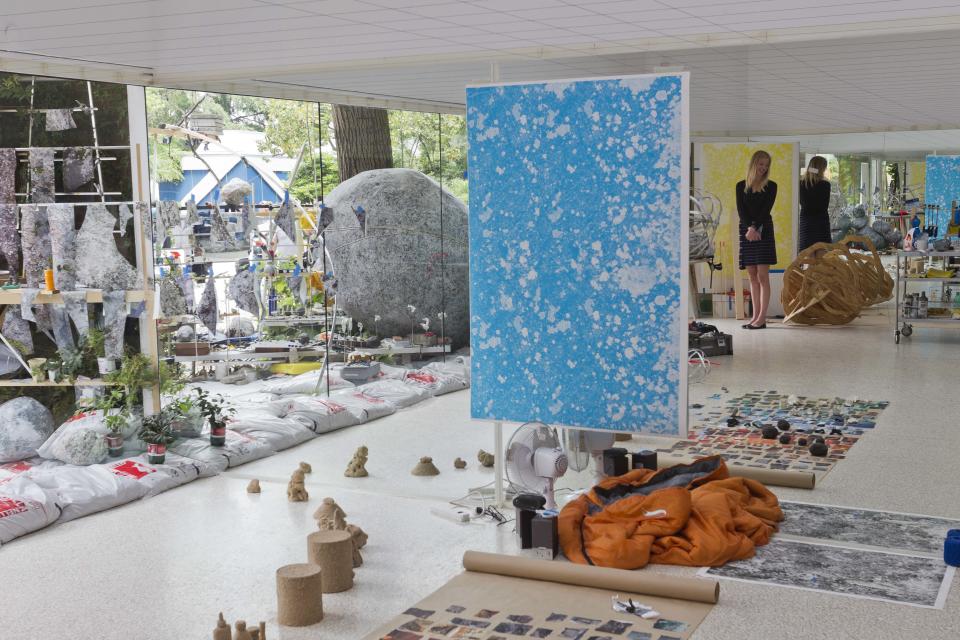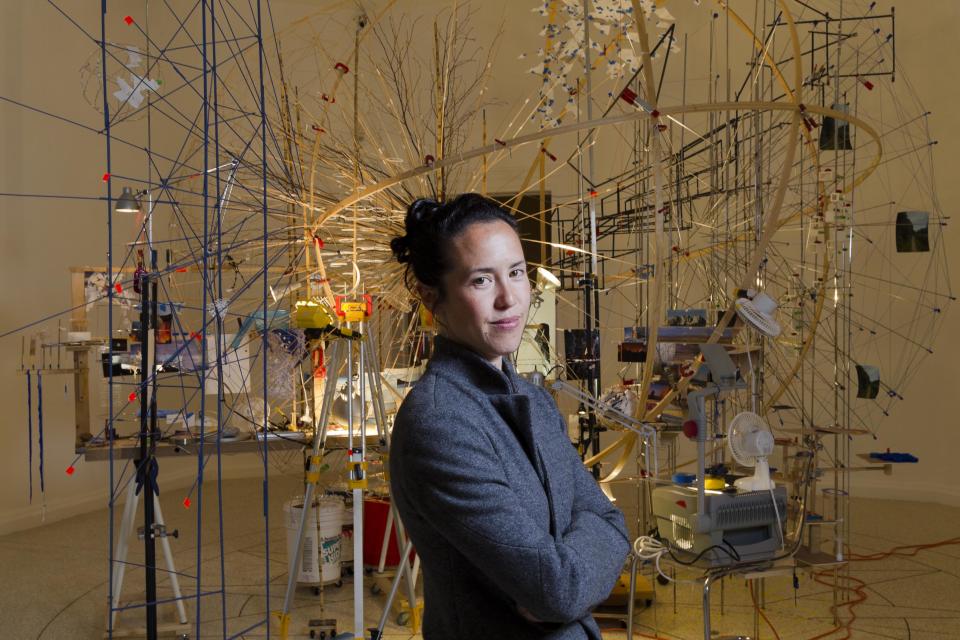Prominent pavilions at the Venice Biennale
VENICE, Italy (AP) — The 55th Venice Biennale, the world's most prestigious art fair, features national pavilions from 88 countries, 10 presenting work for the first time — including the Vatican. No official theme ties together the pavilions, but several ideas are emerging as favorites, including greed, collective actions and the boundaries of the physical world.
The jury awarded the Golden Lion prize for "best national participation" to Angola, for an exhibition that focus on the African nation's capital city, Luanda.
Here are some other prominent pavilions in this year's edition.
UNITED STATES
Step back and Sarah Sze's "Triple Point" series of installations at the U.S. Pavilion is a vision of symmetry and scale, ambition and grandeur. Move in and there's another way to see it, through countless tiny and more intimate scenes, much like a painting by the Dutch master Pieter Bruegel.
Sze has gathered myriad objects — it's no exaggeration to say from around the world — to create her Biennale commission, and she spent 2 1/2 months composing it on site, slogging through Venice's rainiest winter in more than a century.
Her sculptures are collections of everyday objects, from fans to screwdrivers to packs of sugar, connected by sticks and twigs and suspended by string and yarn, to suggest a larger system — a planetarium, observatory or pendulum.
"In each of the rooms, I was really thinking about how we model that amount of information," Sze said. "How do we make sense of it? The idea for each of the sculptures is based around a system of modeling information that is often beyond our ability to understand, like the cosmos or the weather."
BRITAIN
There is little subtle about Jeremy Deller, neither the fluorescent pink pants he wore to previews nor his Biennale art for the British Council — work that takes bold aim at the whims of the rich and the powerful.
The central piece is a painting of an oversized bird of prey called the hen harrier that has a Range Rover in its talons. The work references the 2007 shooting of a pair of hen harriers on the Sandringham Estate on a day when Prince Harry and a friend went shooting. As for the Range Rover, it is the object of the bird's revenge, and Deller's swipe at the haughty who ride them, particularly on London roads where he cycles.
"It's an opportunity to get something off your chest," Deller said this week. "You know you are going to have an audience."
In the next room, a painting depicts the late Victorian designer and socialist William Morris, who appears as a giant throwing Russian oligarch Roman Abramovich's 377-foot yacht into the Venetian lagoon. It's Deller's jab at Abramavoich for mooring the vessel on Venice's Giardini quay, blocking the view.
VATICAN
Australian artist Lawrence Carroll was one of three artists invited to create work for the Vatican's debut pavilion. While being tapped was an honor, he said, it's all a far cry from the Vatican commissions given to masters such as Raphael and Michelangelo.
"Commission is a funny word. Commission implies they are buying the paintings, and that is not the case. I am not sure what will happen to them after," Carroll said. "This wasn't commissioned for the Sistine Chapel. This is temporary."
Carroll's work concludes the trilogy of themes decided by the Vatican: Creation, Un-Creation and Re-Creation. The artist, who until recently lived in Venice, said he could connect with the theme, as much of his work has dealt with giving new life to objects — a passion that goes back to his childhood when his thrifty immigrant parents would find ways to extend the use of everyday things.
Four paintings hang in one room — all large monochromatic canvases in white. One he calls "generically a sleeping painting"; it has a square space cut in the canvas where a folded canvas has been stashed, like a blanket, to be brought out at some point when needed. Another painting is embedded in a block of ice, which melts and refreezes cyclically, a process that continually modifies it.
RUSSIA
For Russian artist Vadim Zakharov, only women can save the world from corruption.
Zakharov's installation embraces the entire pavilion and is itself a metaphor for the Greek myth of Danae, who was locked in a room by her father the king, yet impregnated by Zeus in the form of a shower of gold.
The main floor is man's domain, where greed and corruption rule and where the masses can be dismissed as "peanuts," a notion the artist conveys with irony and humor through a man dressed in a business suit who sits on cowboy saddle shucking peanuts and casting the shells into a pile.
On the lower flower, Zakharov created a cave as a refuge for women only and which communicate with the level above through two holes Zakharov cut in the floor. Through one, gold coins are showered down. Through another, a man in a business suit hauls them up in a bucket and dumps them into a conveyor belt to feed the shower.
In the cave, women visitors carry umbrellas as protection against the showers of gold coins, and are asked to deposit some back into the bucket.
"It's about how you can corrupt with money," said Berlin curator Udo Kittelmann. "The hope for the future is women."
ISRAEL
Israeli Gilad Ratman's multimedia installation follows the fictional journey of a group of people who tunnel from Israel to Venice — creating a hole in the floor as they dig their way in.
A video shows them departing from a hillside, digging the tunnel and arriving at the pavilion, where they set to work sculpting busts from clay they have brought from Israel.
"The journey is about nothing. It's to create a narrative that does not have any purpose or causality. It's the process of creating a work of art," said Sergio Edelsztein who curated the pavilion.
The pavilion reverberates with a guttural sound, a recording of all the sculpting, crawling and walking that have taken place along the journey.
JAPAN
Communal action is central to Koki Tanaka's work in the Japan Pavilion, titled "Abstract Speaking: Sharing Uncertainty and Collective Acts."
Tanaka's thinking about collective action crystalized following the 2011 earthquake and tsunami in Japan, which he followed from Los Angeles where he lives.
"When the earthquake happened, people collaborated and helped each other to deal with the strange situation," Tanaka said.
On Twitter, Tanaka followed as friends in Tokyo chronicled their hours-long walks home without public transport. People responded spontaneously, opening up their homes and businesses as temporary shelters. Tanaka said even his own gallery took people in.
Already before the quake, Tanaka had done a few video pieces as part of earlier work that also dealt with the outcomes of collective acts, such a group of hairdressers collaborating on the same hair cut or artists making pottery together.
"We realized this kind of video could be reinterpreted in the post-earthquake society," said curator Mika Kuraya.
FRANCE and GERMANY
It may be the spirit of Franco-German friendship, which has been at the core of postwar Europe. Or it may just be a collection of artists open to new venues after years of shunned proposals.
But France and Germany, whose pavilions stand opposite each other in the Giardini, took the unusual steps of pavilion-swapping this edition.
In the German Pavilion, French-Albanian artist Anri Sala produces a multimedia installation of musical recordings and videos of a piano concerto composed by French composer Maurice Ravel for the left hand. The show is called "Ravel Ravel Unravel," a play on the English verb "to rave" and the composer's name.
For Germany, exchanging pavilions wasn't enough. It invited artists from four countries to underline the international nature of artistic inspiration, inherently questioning national schemes. The artists include Chinese artist Ai Weiwei, who contributed a sculpture of 886 antique stools that are arranged in interlocking arches. He was unable to attend the biennale, where he also has two other installations, because Chinese authorities denied him a visa.
___
If You Go...
VENICE BIENNALE: http://www.labiennale.org/en/Home.html . Through Nov. 24, 2013.
